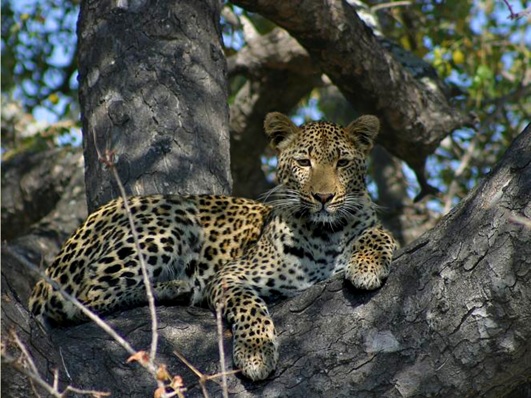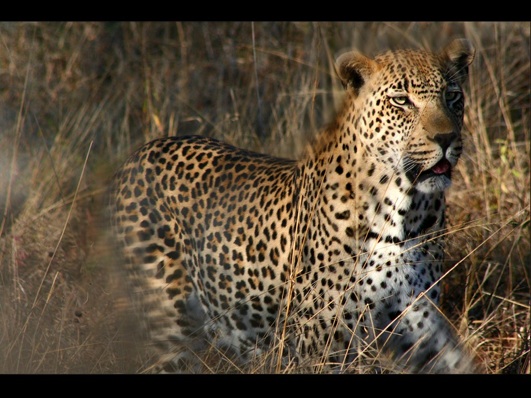 |
Leopardpictures and facts |
 |
Fact: One way leopards avoid too much competition with other carnivores, such as lions, is by hunting smaller sized prey. Baboons, birds, and even rodents are not too small for a leopard's attention.
Source: All the World's Animals: Carnivores, page 37.
Fact: The leopard is opportunistic in its selection of prey. Helpless African Cape buffalo that are too young or old to defend themselves, are potential kill for a leopard. However, the buffalo are sometimes known to defend each other from carnivores, and their sharp horns can be very dangerous. It isn't easy being a leopard!
Source: National Geographic Book of Mammals, Volume 1, prepared by the Special Publications Division, page 108.
Fact: From the shoulder, leopards can measure 18 inches (46 cm) to 31 inches (79 cm) tall.
Source: Defenders of Wildlife

darkroomillusions/ License under Creative Commons 2.0.
Available in three sizes:
1280 x 1024 || 1024 x 768 || 800 x 600
Fact: Leopards are very solitary animals, except during mating time. When a female leopard gives birth after about a three month gestation period, it is usually to two or three cubs. The cubs are gray in color, and their spots are very hard to see. When the cubs grow older, their spotted coat will give them good camouflage for stalking prey.
Source: National Geographic Book of Mammals, Volume 2, prepared by the Special Publications Division, pages 329, 332; All the World's Animals: Carnivores, pages 36, 37.
Fact: Snow leopards have white coats and black spots. These white cats live in the mountains of central Asia, and are quite hard to find. The illegal hunting of snow leopards contributes to them being an endangerd species.
Source: National Geographic January 1998, Labors of Love: A Report by your Society's Committee for Research and Exploration, page 90.
Fact: Did you know? According to Laurie Marker, founder of the Cheetah Conservation Fund in Namibia, leopards can pierce through the skin of their prey's necks, but cheetahs can't. Leopards are more powerful at killing their prey than cheetahs.
Source: National Geographic December 1999, Cheetahs: Ghosts of the Grasslands, by Richard Conniff, page 24.

Image Source: Omarius 14/ License under Creative Commons 2.0.
Available in three sizes:
1280 x 1024 || 1024 x 768 || 800 x 600
Fact: Small hippopotamus that are under a year old are in peril of being preyed upon by leopards. In the wild, hippos can live over 40 decades, so leopards have a small window of opportunity before the hippopotamus are just too large and too dangerous. Adults hippos have very few enemies.
Source: National Geographic Book of Mammals, Volume 1, prepared by the Special Publications Division, page 263.
Fact: Even though the leopard's prey may be twice its own weight, leopards are still able to hoist their kill into a tree for safekeeping. Here, the leopard can feast at leisure, out of most scavengers' reach.
Source: National Geographic October 2001, Tracking the Leopard, by Kim Wolhuter, page 97.
Fact: Besides land encroachment and being hunted by humans, the leopard's most dangerous enemy is the lion. Lions may steal the leopard's kill or even a cub if the leopard is not careful!
Source: National Geographic October 2001, Tracking the Leopard, by Kim Wolhuter, page 100.
The Lilac Breasted Roller/ License under Creative Commons 2.0.
Copyright © 2008 Leopard Pictures & Facts
Member of Fohn.net